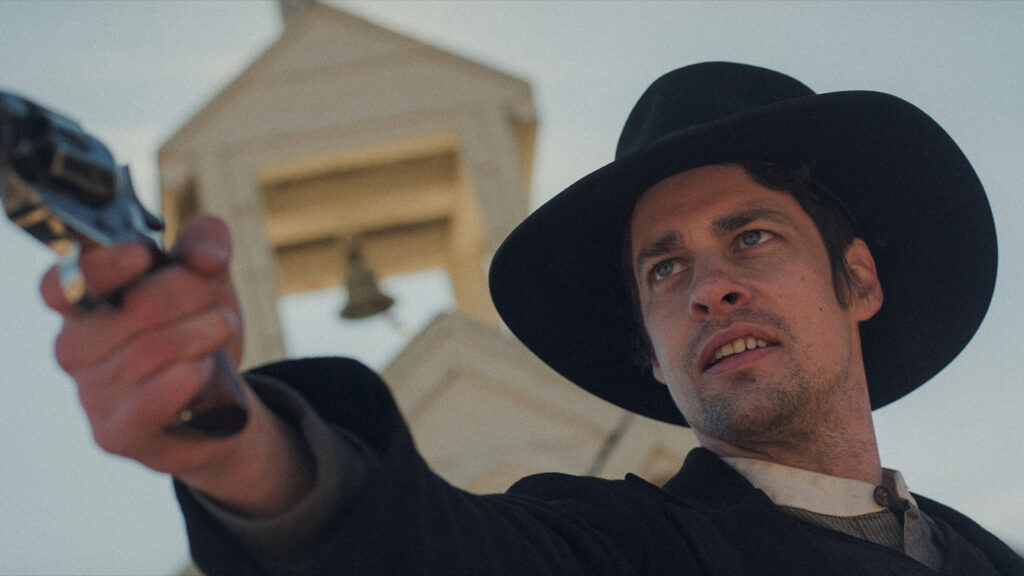Ghosts of Red Ridge – A Haunted Western That Aims for Atmosphere, But Falters in Execution
Ghosts of Red Ridge is a 2024 independent Western-horror film that seeks to blend classic frontier tropes with a ghost story mystery. Directed by Stefan Colson and written by Brandon Cahela, the film follows Sheriff Arvis and his deputy Hank as they struggle to maintain order in the dying gold-rush town of Red Ridge, Texas. After a violent robbery leaves several townspeople dead, a mysterious drifter is arrested—and soon, Arvis begins seeing ghostly apparitions. Are these supernatural warnings, or simply the unraveling of a guilty conscience?
The premise is rich with potential. The Old West, already a place of isolation, brutality, and moral ambiguity, serves as fertile ground for horror. Sheriff Arvis, portrayed with a weary gravitas by Owen Williams, is a lawman torn between duty and personal regret. As spectral figures begin to appear around town, he questions not just the drifter's guilt, but his own failures as a protector of the people. Deputy Hank provides a contrasting presence—skeptical, grounded, and increasingly disturbed by the sheriff’s descent into paranoia.

Shot primarily at Gammon’s Gulch in Arizona, a preserved Western-style set, the film has an authentic if minimalist visual style. The dusty streets, weathered saloons, and creaking buildings establish a convincing atmosphere. There’s an eerie stillness to the town that supports the film’s slow-burn tension. Director Stefan Colson, who also appears in a supporting role, relies on natural lighting and long takes to create a sense of unease rather than relying on jump scares or digital effects.
However, despite its ambition, Ghosts of Red Ridge suffers from uneven execution. The acting is inconsistent, with some performances—particularly from supporting cast members—coming across as wooden or overly theatrical. The dialogue often feels stilted, and exposition is sometimes delivered awkwardly. Although the concept of a Western ghost story is compelling, the film struggles to build sustained suspense. The pacing is slow, occasionally meandering, and key moments of horror feel either rushed or underdeveloped.

One peculiar criticism among viewers has been the noticeable absence of Western essentials—there are no horses, stagecoaches, or wide-range gunfights. These omissions might have been budget-related, but they make the film feel oddly empty and disconnected from its genre roots. Costume choices and set designs, while functional, occasionally appear anachronistic or lacking in detail, which detracts from immersion.
Yet the film does have its defenders. Some niche audiences have praised its originality and eerie tone, noting that it evokes the spirit of revisionist Westerns or video games like Red Dead Redemption: Undead Nightmare. There are moments—particularly during the final act—where the psychological themes of guilt, grief, and retribution rise to the surface with genuine emotional weight.
In the end, Ghosts of Red Ridge is a creative attempt to merge genres that rarely meet. It aims to deliver a supernatural parable wrapped in the dusty cloak of frontier justice. While the atmosphere and concept hold promise, the execution—marred by inconsistent acting, technical limitations, and uneven storytelling—prevents it from fully realizing its potential. For fans of indie horror-Westerns, it might still offer a haunting curiosity, but for most, it may feel more like a missed opportunity than a buried treasure.

-1751709532-q80.webp)

